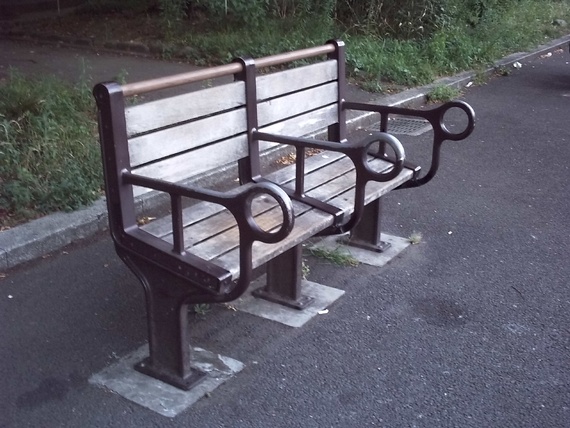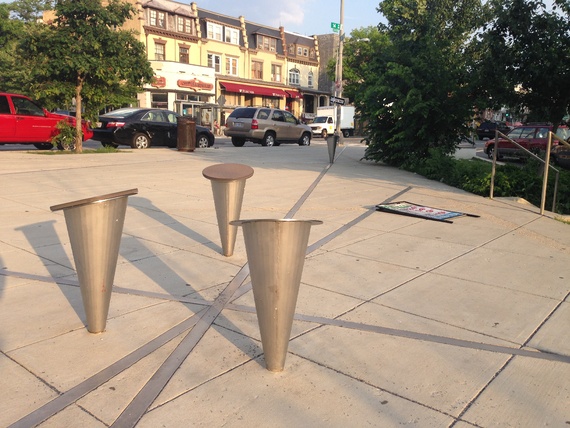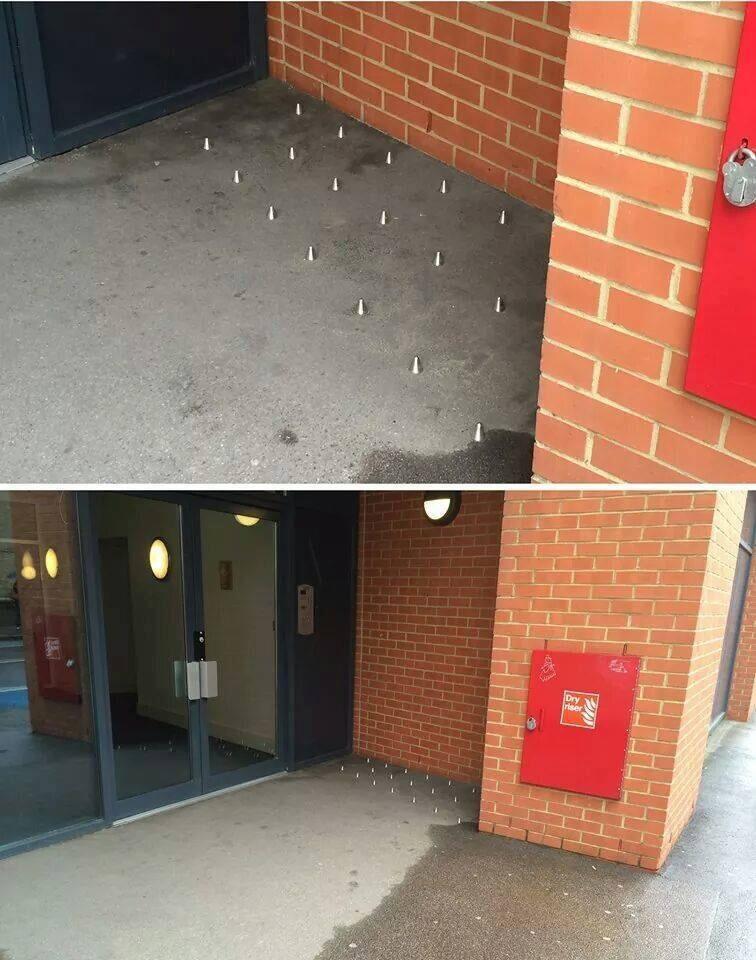- Jan 2023
-
www.theguardian.com www.theguardian.com
- Oct 2016
-
www.theatlantic.com www.theatlantic.com
-
men and women
Kennesaw State University staff and students are up in arms over the appointment of their new president, Georgia Attorney General Sam Olens. Olens protested a gay rights bill, and many opposed his decision to do so.He also opposes gender neutral bathrooms, which would strongly inhibit transgendered students at KSU. The problem with his appointment was that staff had no say in it, as well as the damage it would do to the safe space Kennesaw State was trying to establish. With Olens in charge, many students would likely not feel safe on campus from fear of harassment and even potentially violence. This is detrimental to the University as a whole.
Brasch, Ben. “Kennesaw State Students, Faculty Hold Silent Olens Protest.” ajc. N.p., n.d. Web. 17 Oct. 2016.
-
Gender is not going to disappear
Just like race is not going to disappear. Race is a part of your history, culture, and values, and gender too has its effect on people's lives in similar ways such as biology.
-
”
One path of reasoning that may be used to justify the difference between racial issues and issues of identity is that no one typically wants to change the race they are born as, but people think that if you are born a gender, you are stuck as that gender. There are very few trans-racial people, but a great amount of trans-gendered people.
-
Queer
Why is queer the preferred word here? Would "homosexual" or something along those lines be a more accurate and politically correct word?
-
Nobody feels comfortable getting naked in front of strangers—especially teenagers.”
This is essentially what I said in an earlier annotation. Locker rooms are a big part of bullying and anxiety, and they have no place in a modern system that values students' mental and physical health so greatly.
-
At least in part, “men who are supporting this are reasserting a protective role.”
The fact that the fear of rape is being used as an excuse is crazy. If women are scared of being raped in public restrooms, perhaps the real issue is lack of police enforcement and protection in these environment and not the people using them.
-
These numbers suggest nervousness about fluid gender identities—and that America isn’t even close to a consensus that men and women should choose the way they act.
Again, these sound like older times when people would prefer that blacks stick with their jobs and whites with the others. The refusal of people integrating and accepting others is downright horrific in a society as modern as America.
-
they wear their gym clothes under their regular clothes so they never have to be naked at school; or they’re late for class because of the time they spend looking for an empty restroom.
These honestly sound like problems that anyone would have with other people in general. I, personally, don't care if a person looking at me identifies as something else sexually, I don't like being seen naked at all. I'm sure many other students feel this way, and perhaps it's time for a change in how schools have people change clothes and get naked regardless of identification.
-
a way of thinking about the Bible as the word of God.”
It's also interesting to note that the Bible contains stories of same-sex relations as well, including the Romans. While many Christians may claim the Bible lays the foundation for traditional values, it also lays the frame for homosexuality as well.
-
conviction rather than bigotry.
In the older times, people would tend to claim that there are actual biological differences between Africans and Whites, which helped to justify their separation. Similar treatment is present here, which helps people try and cover up bigotry with phony reasoning.
-
While these bathroom bills may be a temporary flare-up, the divisions underlying them are foundational, and unlikely to be resolved by the Supreme Court or the Justice Department.
It is interesting to not that race relations began with trivial matters such as train cars and bus rides, but eventually moved on to bigger issues. Perhaps the focus of these smaller things is to initiate a change, regardless of how small they are.
-
“religion.”
Religion has no place in government, as the separation of church and state is a major principle of US government, The fact that religion is essentially the sole reasoning against these laws is a bit preposterous and should be addressed.
-
- Sep 2016
-
www.yalelawjournal.org www.yalelawjournal.org
-
These problems and others will be analyzed more fully in the remainder of this Article.
The main takeaways I had from this article are (1) that Architect tend to favor the rich over the poor, as they are the ones paying for their work, (2) The rich prefer to not see the poor, and (3) Architects deliberately exclude poor people in their infrastructure,
-
Although a residential permitting scheme like this allows neighborhoods to physically exclude, it also imposes bureaucratic requirements on residents such as purchasing parking permit stickers and remembering to give guest passes to visiting friends
As a personal example, I lived across the street from a gated community that many of my friends lived in. You needed a card to get in through the front entrance, but there was a back entrance with a parking lot and a sidewalk into the neighborhood that wasn't gated. It may be important to note that most places have ways to work around gates, and people that are poorer and have to walk will likely find workarounds easily.
-
Many one-way streets were created during urban renewal with the stated goals of accommodating automobile traffic and allowing people to pass quickly through cities.
Many of the streets around the vicinity of GSU are one way. This does not necessarily hurt students, as they can walk to classes from parking decks, but it makes it more difficult for people crossing through campus to navigate to a specific location. Perhaps this was intentional as a means to limit traffic through the campus.
-
The case settled, but it presents a stark example of the dangers inherent in exclusionary transit design.
Transit stops are another place where homeless people spend the night, according to my supplemental reading. It is a good place to stay because if a police officer comes up to someone staying at one, they could easily use the excuse that they are waiting for the bus. I believe that as time goes on, simpler bus stops such as signs and ones that lack a shelter will become more popular so as to deter homeless people.
-
The effect of these types of residency requirements is often to exclude people who do not live in a given neighborhood from that neighborhood.
Couldn't one argue that perhaps if one doesn't live in a particular neighborhood, or has friends in it, then there is no reason to be in it? From my understanding, the purpose of these permits is to prevent solicitors or predators, not the poor. Most poor people don't even have cars to park.
-
For example, one might think it a simple aesthetic design decision to create a park bench that is divided into three individual seats with armrests separating those seats. Yet the bench may have been created this way to prevent people—often homeless people—from lying down and taking naps
This particular section was the main focus of my article. Various bench designs were shown, and many were not able to be slept upon. Some examples are below.


-
Justice Marshall dissented, acknowledging that this inconvenience carried a “powerful symbolic message.”
This being Justice Thurgood Marshall, who was the first African-American Supreme Court justice. His appointment helped the Supreme Court to see the various ways they were doing injustice to the colored people of America, and the addition of his perspective helped to make more fair rulings in the Supreme Court.
-
Wealthy, mostly white residents of the northern Atlanta suburbs have vocally opposed efforts to expand MARTA into their neighborhoods for the reason that doing so would give people of color easy access to suburban communities
The source for this particular quote was written in 2011. The Black Lives Matter movement started after this article was written. I think that if wealthy white residents were to use this reasoning today, they would likely be chastised harshly for their words. It is interesting to see how things have changed in just the past 5 years.
-
public park at Jones Beach
The fact that it blocks people of color as much as poorer people is an interesting thing to note. Don't poorer people tend to walk everywhere? Could the buses not find another route? Wouldn't this also pose a problem if someone who lived in the area's car broke down and the bus was necessary? It is interesting to see that the richer people would prefer to be inconvenienced rather than have their area populated by the poor.
-
Article
My article, "How Cities Use Design to Drive Away Homeless People", by Robert Rosenberger, begins with a very strange erection outside of a Tesco in London. In a shady area next to the door and behind a pillar, numerous metal spikes were cemented into the ground in an effort to deter homeless people from sleeping there. There was a public outcry, and protesters even covered them in cement to render them useless.
The public outcry, however, didn't extend to other forms of deterrence. As a non-skater, many people fail to take notice to the metal studs added to infrastructure to prevent skaters from grinding on them. Similarly, as people that don't sleep in public areas, we fail to see things that prevent people from sleeping there. Some examples given are public benches shaped like cylinders, public benches with armrests, and even some interesting public seating that are simply stools. Essentially, architects design benches and infrastructure in ways that deter unwanted people, including both skaters and homeless.
Rosenberger, Robert. “How Cities Use Design to Drive Homeless People Away.” The Atlantic 19 June 2014. The Atlantic. Web. 22 Sept. 2016.
-
The examples of architectural exclusion identified in this Part are concerning in that they reveal a number of underlying problems.
Even more concerning is the lack of public outcry, save for when design is very blatant, like in the picture shown.
 If the spikes were, say, replaced by a sculpture or another piece of art, the outcry would be far smaller.
If the spikes were, say, replaced by a sculpture or another piece of art, the outcry would be far smaller. -
often poor people and people of color
I realize that in modern times, the former is more likely than the latter, as the latter can be seen as racial profiling. Is there chance that perhaps stereotyping based on class will be outlawed in the near future, similar to the outlawing of racism?
-